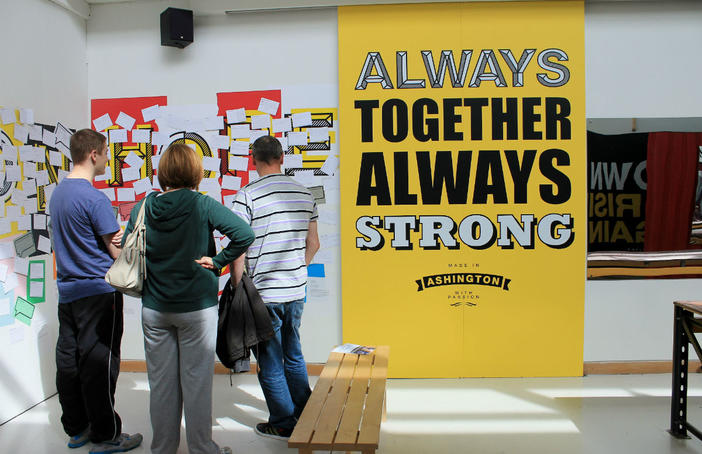Blog Post
The four pillars of partnerships
Tom Andrews, founder and coach, shares his experience of working in partnership and the characteristics of successful collaborations.

Tom Andrews, founder and coach, shares his experience of working in partnership and the characteristics of successful collaborations.
When I was asked to do a 20-minute provocation on ‘working in partnership’ for a recent peer learning gathering for the Creative People and Places network, I readily accepted. After I had pressed send on my acceptance email, my first lesson about partnerships emerged: always take time before saying yes. Throughout my subsequent thoughts about partnerships, the importance of taking time to make a thoughtful decision underlies the following observations.
These remarks on partnerships are based on my own experiences of founding and leading two participatory arts organisations: Music for Change and People United. I thought back to experiences of good and bad partnerships and their characteristics. These seemed to fall into four main areas:
1. Shared Purpose
Do the different parties buy-in to the goal and mission of the project? Is there a shared ethos and purpose? I have had experiences of beginning work with partners and slowly realising that they are not really that bothered about the stated goal in the application, they had other agendas: money, status, profile etc…Of course there can be different benefits for partners and different priorities, but at the heart, do we want the same core outcome?
2. Clarity
Does each partner know their role? This is the one I used to stumble over all the time; I’d assume we were all nice people and we would work things out together (or that it was obvious what our respective roles and responsibilities were). That’s the problem of being an optimist. I have learnt that clarity at the start removes uncertainty, and uncertainty, in my view, is the biggest cause of anxiety. This is about showing leadership. Now as a coach, counsellor and mentor, I have learned to be clear about roles at the start: jointly agreeing purpose, boundaries, timings, cost and process. Is there clarity about who does what?
3. Openness
You know that feeling in the pit of your stomach when you know something isn’t right? I’ve spent too much time tip-toeing around an issue when I know I just need to take courage and say something. This is about openness of communication, to take time to pause and reflect with our partners, and to regularly feedback (with kindness) about how we are working together. Thinking about what happens when things go wrong, is a good thing to discuss early on. Are we being honest with each other?
4. Humanity
I see you, I hear you. In the constant drive for results and outputs, surrounded by worries of reputation and finances, we can forget that the person opposite us is not just an enabler of resources or contacts or expertise but is another person, full of complexities and doubts like us. I know I have often been half-present, thinking ahead and planning future outcomes, rather than taking the time to simply be with another person. Taking time to listen and really hear, can enable a true dialogue and collaboration, not just a transaction. Are we present with the other person?
These areas above (SCOH – if you like an acronym) are my current observations and I’m sure reading this, you have other elements you would add from your experiences. Partnerships are tricky; but when they succeed, they are a joy, helping us multiply our impact many times over. And as Charles Darwin said:
"It is the long history of humankind (and animal kind, too) that those who learned to collaborate and improvise most effectively have prevailed."
Tom Andrews is the founder of Music for Change and People United. He now supports individuals (primarily in the cultural, voluntary and public sectors) as a coach and advisor, creating space for reflection, contemplation and clarity.







